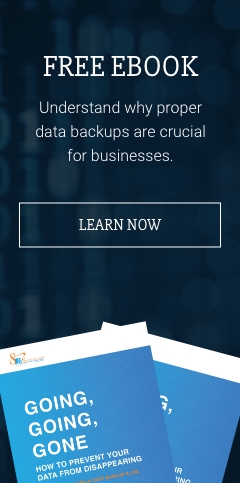Cyberattacks are becoming more dangerous by the minute, so you must safeguard your business at all times. However, learning about proper cybersecurity protection can be confusing because of all the misinformation available online. So instead of keeping your company safe, bad cybersecurity could expose your organization more to security risks such as phishing scams and malware attacks.
Let’s take a look at the top four cybersecurity myths that may harm your business:
Myth #1: Cybercriminals don’t target small- to mid-sized businesses (SMBs)
Some SMBs believe that cybercriminals only come after large companies. This is because they think that, unlike giant corporations, they don’t have much sensitive data worth stealing. However, this is a mistaken notion, because according to the Verizon 2020 Data Breach Investigations Report, 28% of data breaches involved small businesses.
Why is this so? Cybercriminals attack SMBs because their complacency towards cybersecurity makes them easy targets. Since SMB owners and managers tend to allocate very little money and attention towards protecting their IT systems from cyberattacks, breaching their systems is child's play. What’s more, their employees might have poor cybersecurity habits like connecting to public Wi-Fi networks and using weak passwords.
This shows that all businesses, regardless of size, are at risk of cyberattacks, so SMBs must find ways to always stay protected.
Myth #2: Passwords are enough to secure data
Protecting sensitive information with passwords is helpful, but many people nowadays still use weak passwords like “abc123,” “picture1,” and “12345678.” Then again, making passwords stronger is also problematic because attackers can exploit password-strengthening rules to optimize their brute force attacks.
So how can you protect your business’s data? One effective way is to implement multifactor authentication (MFA). MFA uses two or more factors to verify a user’s identity when accessing data or logging in to an account. These factors are unique to the user and can be:
- Something they have, such as a physical security key or a one-time authentication code
- Something they know, like a PIN code, password, or answers to security questions
- Something they are, like a facial, retinal, or fingerprint scan
Even if a cybercriminal acquires a user’s primary login credentials, they still would not be able to access the account without providing the subsequent authentication factors.
Myth #3: Cyberattacks are largely external
Cybercrime is usually associated with hackers from outside an organization looking to steal sensitive data. But did you know that the people in your company might also be a threat to your company’s cybersecurity?
According to a report by Cybersecurity Insiders, 70% of organizations are recently seeing more attacks caused by insider threats. Insider threats could be current and former employees, contractors, or business associates who accidentally fall victim to cyberattacks, or intend to sabotage your company for their own gain. Since the insider has legitimate access to your company data and applications, they can potentially cause significant harm before the attack is detected and remediated.
To mitigate the risks of insider attacks, educate your employees about cybersecurity best practices. You can also implement access management solutions like Azure Information Protection (AIP) and Microsoft Intune. AIP classifies information based on sensitivity and enables you to add control and visibility permissions to your data. Intune, on the other hand, regulates mobile devices used by employees to access company data and applications.
Related article: The dangers of insider threats to your business
Myth #4: Cybersecurity solutions are sufficient to protect your business against cyberattacks
Firewalls, anti-malware software, and intrusion prevention systems can be helpful in keeping cyberthreats at bay, but they are not enough to solve all cybersecurity issues. For instance, new malware variants can often slip through antivirus software, while some phishing attacks cannot be prevented by common cybersecurity programs.
Remember that security solutions are just one aspect of your business’s cybersecurity framework. Your employees also need to go through regular cybersecurity awareness training sessions so they know what to do when they encounter cyberthreats in the future.
Your business can also partner with a reliable managed IT services provider like Safebit Solutions who will proactively monitor your network and handle cyberthreats before they become a big security issue.
Safebit Solutions provides the best cybersecurity solutions for Houston businesses through advanced threat-filtering systems and malware-detecting tools. To learn more about how we can keep your business protected from cyberattacks, drop us a line today.


